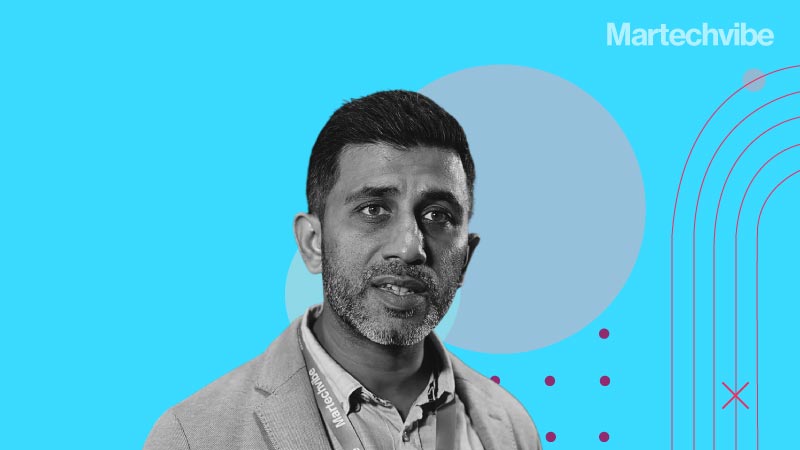Driving Sustainable Customer Engagement with Kunal Badiani at MoEngage
As the weather changes, it is time to reflect on a customer grouse that may seem small now but has the potential to snowball. “Low satisfaction scores, increasing complaint volume and negative response to surveys might indicate a poor experience. The reason could be something as simple as not targeting preferred channels,” says Kunal Badiani, […]
Topics

As the weather changes, it is time to reflect on a customer grouse that may seem small now but has the potential to snowball.
“Low satisfaction scores, increasing complaint volume and negative response to surveys might indicate a poor experience. The reason could be something as simple as not targeting preferred channels,” says Kunal Badiani, Senior Director and Head of Expansion – Middle East and Africa, MoEngage.
For instance, if a customer prefers to be reached via mobile push and you send an email, the message may go unnoticed and account for a poor customer experience. A Customer Engagement Platform provides you with insight into customer preferences and lets you analyse what/where you’re going wrong.
We spoke to Badiani about designing seamless customer journeys and making sure brand interactions are keeping up with rising customer expectations.
Excerpts from the interview;
How can data gaps affect CX, and how can brands avoid it?
- Inefficient and unproductive business processes
In the absence of a Customer Engagement Platform, teams – especially sales, work in silos with communication scattered across various channels. This, in turn, affects overall efficiency and sale success. A customer engagement platform automates most manual and repetitive processes, reducing the burden on teams by consolidating all customer interactions in one place. This leads to improved productivity, efficiency and even revenue.
- Lack of data and insights
Without a tool that collects and analyses customer data, you’re missing a clear understanding of your customer. Built-in data analysis and reporting capabilities of a Customer Engagement Platform help you better understand customer behaviour. Through detailed insights into buying habits, likes and preferred communication channels, you can target customers better.
- Questionable customer satisfaction
Low satisfaction scores, increasing complaint volume and negative responses to surveys might indicate a poor experience. The reason could be something as simple as not targeting preferred channels. For instance, if a customer prefers to be reached via mobile push and you send an email, it would obviously annoy the user and account for a poor customer experience. A Customer Engagement Platform provides you with insight into customer preferences and lets you analyse what/where you’re going wrong.
- Untapped selling potential and opportunities
Manual tracking and nurturing of leads eventually result in a loss of opportunities. By leveraging the capabilities of a Customer Engagement Platform, follow-ups can be automated. Nurture programmes can be seamlessly picked up through the data and insights collected on the platform, effectively restarting conversations and adding value.
Data silos are a common challenge for enterprises. What advice would you give leaders to overcome this challenge?
According to the State of Insights-led Engagement Report, Middle East Edition, almost 44 per cent of marketers claimed that various marketing, social, and mobile teams are working in silos and engaging with customers separately. As a result, brands have faced challenges and gaps, and their martech stack has not been as effective as desired.
One solution brands can look at is adopting a unified engagement platform or a Customer Engagement Platform. These platforms have the capability to store data from various sources and compile it under one umbrella to build a holistic profile.
If properly implemented, the right Customer Engagement Platform breaks down silos, breeds collaboration, helps you better understand customer behaviour, and improves segmentation and targeting to drive increase in conversions while simultaneously boosting retention.
How have you seen shopper trends evolve over the last few years in the Middle East?
- Trust in digital payments rises
Approximately 60 per cent of consumers in the region are choosing to pay for ecommerce via a digital payment method – a 20 per cent increase in 2021 compared to 2020. Three in four (76 per cent) consumers in the region also report using some form of fintech app in 2021, which is nearly on par with the average of consumers across APAC (80 per cent). If this trend holds, and we expect it to—2023 could herald the onset of a truly cashless society in the Middle East.
- Apps dominate digital commerce
Latest research shows that nearly half (48 per cent) of online consumers across the region now prefer apps to purchase products or services, with many bypassing traditional online methods on a laptop, desktop, or even mobile browser.
- Social media and conversational commerce
Smart brands are now ramping up their innovation to cater to consumers’ ongoing search for personalisation, convenience, and human-centric customer service. Consequently, more retailers in the region are connecting with customers via WhatsApp and other social media platforms, giving rise to “conversational commerce.”
How do you see hyper-personalised customer engagement strategies changing the way the BFSI industry elevates CX in the near future?
In today’s day and age, where customers are living in a phygital era, banks are entering into a hyper-personalisation phase where they are striving to provide a curated one-to-one experience.
Banks have started using martech stacks to unlock the hyper-personalisation potential by having access to insights like
- Basic data, i.e., name and location;
- Deeper level of customer attributes, like preferred language, communication channel, and content affinity;
- Behavioural data, like recency, frequency, and monetary value of the purchase;
- Data around moments of conversion, dormancy, and churn; and
- Data measuring usage patterns to segment customers appropriately.
As a result, banks have been able to elevate their customer experience and target customers based on the customer’s needs.
For example: Mashreq Neo Boosts Engagement Using Personalisation using a sophisticated Martech stack. Mashreq Bank was able to analyse the app behaviour of the customer along with preferences and customer journey flows.
This enabled them to target customers with personalised offerings, resulting in a 16 per cent boost in debit card activation, amongst other benefits.
What are the critical elements for driving sustainable customer engagement?
- Trust building
- Inspire emotions to engage customers. As human beings, our decisions are influenced by our emotions. We love authenticity and hate deceit, so brands need to come across as trustworthy. Only then will customers respond positively.
-
Personalise your message
-
74% of marketers say targeted personalisation increases engagement. A first-name greeting, albeit a simple tactic, can put a smile on your customer’s face and prompt them to act.
-
-
Position your product to meet a need or desire
-
53% of consumers rate quality over price when making a purchasing decision. Focusing on feature benefits will reassure consumers while banging on about price can sometimes dissuade them from engaging further.
-
-
Technology plays a crucial role
-
Develop or invest in technology which has the capability to track and analyse customer data and convert them into insights.
-








































































































